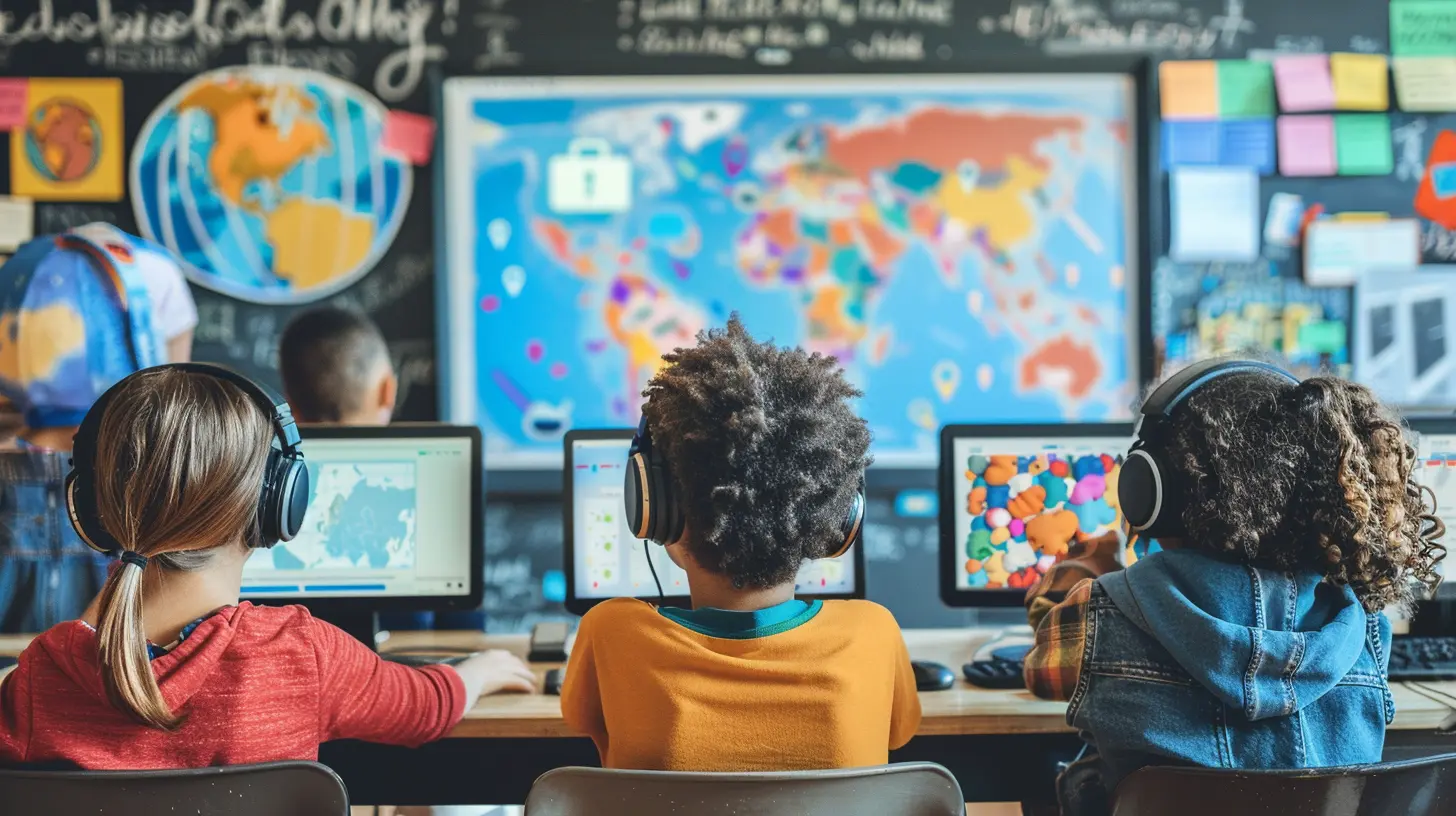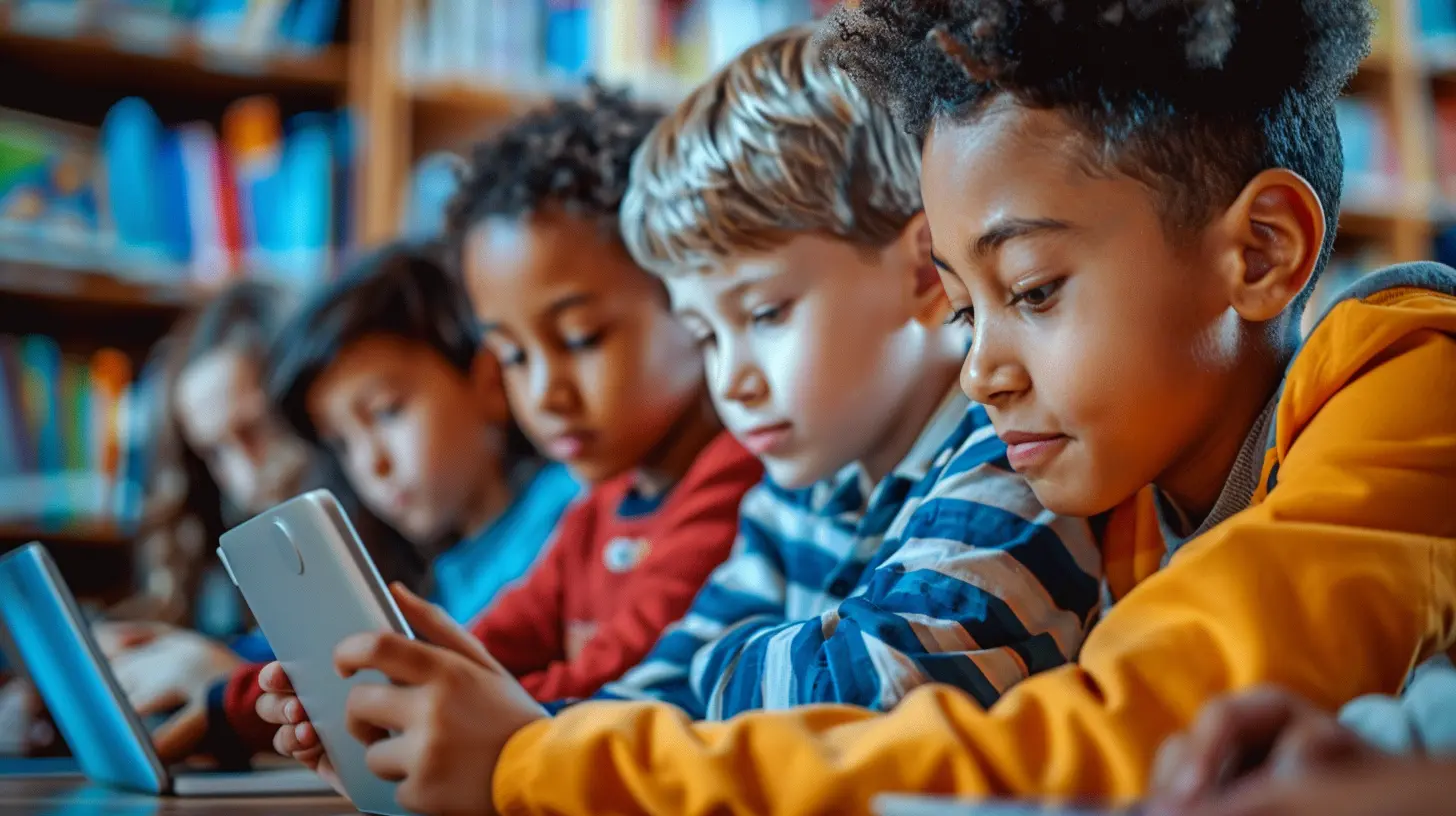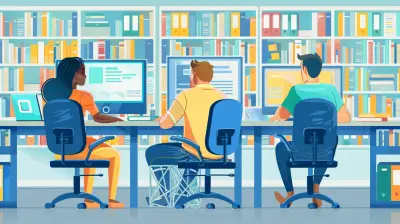EdTech for Language Learning: Tools for Engaging Multilingual Students
20 April 2025
Language is the bridge that connects people, cultures, and ideas. But learning a new language? That can feel like climbing a mountain—challenging, exhausting, yet incredibly rewarding. Thanks to technology, that mountain isn't as steep as it used to be.
Educational technology (EdTech) is revolutionizing language learning, making it more interactive, engaging, and fun. Whether it's a student mastering English as a second language or a classroom full of multilingual learners, the right digital tools can transform their journey.
So, what are the best EdTech tools out there, and how are they helping multilingual students thrive? Let's dive in! 
Why EdTech is a Game-Changer for Language Learning
Remember the days of flipping through bulky dictionaries or listening to repetitive cassette tapes? Those methods had their time, but today’s learners need something faster, more engaging, and interactive.With EdTech, students no longer sit passively through lessons. Instead, they actively participate, practice in real-time, and receive instant feedback—all crucial for mastering a new language.
Here’s why EdTech is changing the game for language learners:
- Personalized Learning – Every student learns differently, and EdTech adapts to individual needs.
- Instant Feedback – Mistakes are part of learning. EdTech provides immediate corrections so students can improve faster.
- Interactive & Engaging – Gamification, videos, AI chatbots—learning a language is now exciting rather than monotonous.
- Accessibility – From mobile apps to online platforms, students can learn anywhere, anytime.
Now that we've set the stage, let’s look at the top tools helping multilingual students succeed. 
Top EdTech Tools for Language Learning
With so many options out there, choosing the right tool can feel overwhelming. But don’t worry—I’ve got you covered! Here are some of the best EdTech tools filling classrooms (and homes) with language-learning magic.1. Duolingo – Gamifying Language Learning
If learning a language felt like playing a game, wouldn’t it be more fun? That’s exactly what Duolingo does.- Bite-sized lessons that fit into any schedule
- Engaging stories, quizzes, and instant feedback
- Gamification elements (badges, streaks, and leaderboards) to keep students motivated
While Duolingo isn’t a full-fledged language course, it’s a fantastic tool for reinforcing vocabulary and grammar concepts.
2. Rosetta Stone – Immersive Learning Experience
Rosetta Stone has been around for decades, and for good reason—it works! Unlike traditional methods, this program uses full immersion, meaning you won’t just memorize words, but actually think in the new language.- Speech recognition technology to perfect pronunciation
- Picture-based learning for natural comprehension
- Structured lessons tailored to different proficiency levels
For multilingual students, Rosetta Stone offers a way to build strong foundational language skills without relying too much on translations.
3. Google Translate – Breaking Language Barriers
Okay, I know what you’re thinking... "Google Translate? Really?" But hear me out.While it may not be perfect for grammar, this tool is a lifesaver for multilingual students trying to navigate between their native language and the one they’re learning.
- Text, voice, and camera translations for instant assistance
- Offline functionality—great for students without constant internet access
- Conversation mode for real-time dialogue translation
It’s not a full-fledged learning tool, but it’s an excellent companion for multilingual learners.
4. Memrise – Learning with Real-life Context
Memrise takes language learning beyond the textbook and into the real world. How? By using videos of native speakers and interactive AI technology.- Authentic conversations with native pronunciations
- AI-powered chatbot for real-world practice
- Spaced repetition to reinforce vocabulary effectively
For students who struggle with textbook-heavy learning, Memrise offers an engaging alternative.
5. Quizlet – Flashcards Reinvented
Flashcards have been a language-learning staple for years, but Quizlet takes them to the next level.- Digital flashcards with images and audio
- Customizable word lists for specific learning needs
- Interactive games to make memorization fun
Teachers and students can create their own decks or use pre-made sets, making it an incredibly versatile tool.
6. BBC Bitesize – Engaging Educational Videos
For students who prefer visual learning, BBC Bitesize offers educational videos, guided lessons, and interactive activities across multiple languages.- High-quality, well-structured language courses
- Engaging explanations, making even tricky concepts easy to grasp
- Free access, making it an excellent resource for students and teachers alike
Sometimes, watching a well-explained video is all it takes to make a language concept click.
7. HelloTalk – Practicing With Real People
Want to practice with native speakers but don’t have any around? HelloTalk connects learners with native speakers globally, making language practice feel natural and interactive.- Text, voice, and video chat with real people
- Built-in translation and correction features for smoother conversations
- Engages learners in real-life discussions instead of textbook exercises
For multilingual students who need real-world practice, HelloTalk is a game-changer. 
How Teachers Can Use EdTech in The Classroom
It's not just students who benefit from these tools—teachers do, too! Here are a few ways educators can integrate EdTech into their language lessons:- Use Gamified Apps – Tools like Duolingo and Memrise can be incorporated into daily language exercises.
- Host Virtual Language Exchanges – Platforms like HelloTalk allow students to connect with native speakers worldwide.
- Leverage AI for Instant Feedback – Many programs use AI to correct pronunciation, grammar, and vocabulary in real-time.
- Create Interactive Lesson Plans – Quizlet and BBC Bitesize can supplement traditional lessons with engaging digital activities.
When used effectively, EdTech turns language learning from a passive activity into an immersive experience. 
The Future of EdTech in Language Learning
Technology is evolving fast, and so is language learning. Imagine AI-driven tutors that adapt to each learner’s strengths and weaknesses or virtual reality experiences that immerse students in foreign cultures. Sounds futuristic? It’s already happening!The future of EdTech in language learning looks promising, with advancements like:
- AI-driven tutors providing personalized language coaching
- Augmented reality (AR) for immersive, real-world practice
- Voice recognition tech refining pronunciation with real-time feedback
With these innovations, multilingual students will have more powerful tools at their fingertips than ever before.
Final Thoughts
Language learning doesn’t have to be intimidating or frustrating. With the right EdTech tools, students can turn what was once a dull memorization exercise into an exciting and interactive journey.Whether you're a student trying to master a new language, a teacher looking for engaging resources, or a parent helping a multilingual child, there’s an EdTech tool out there for you. So why not take advantage of these digital innovations and make language learning more fun, interactive, and effective?
After all, every language learned is a new world opened.
all images in this post were generated using AI tools
Category:
Educational TechnologyAuthor:

Anita Harmon
Discussion
rate this article
7 comments
Lyanna Sweeney
Great article! It's inspiring to see how EdTech can truly enhance language learning for multilingual students. The tools you mentioned seem like fantastic ways to foster engagement and build confidence. Excited to explore these resources and support our diverse classrooms! Keep up the great work!
May 16, 2025 at 2:35 AM

Anita Harmon
Thank you for your kind words! I'm glad you found the article inspiring and helpful for supporting multilingual students. Happy exploring!
Patrick James
This article brilliantly highlights innovative EdTech tools that enhance language learning for multilingual students. It's inspiring to see such engaging resources that empower educators to foster inclusivity and connection in diverse classrooms. Great work!
April 24, 2025 at 3:21 AM

Anita Harmon
Thank you for your kind words! I’m glad you found the article inspiring and valuable for fostering inclusivity in language learning.
Kassidy Weber
Great insights on leveraging EdTech for multilingual education! Incorporating diverse tools can truly enhance engagement and foster inclusivity. I’d love to see examples of specific applications that have shown success in real classrooms.
April 23, 2025 at 7:09 PM

Anita Harmon
Thank you! I appreciate your interest. I'll highlight some successful applications in future posts, like Duolingo for Schools and Flipgrid, which have shown great results in real classrooms. Stay tuned!
Ellie Rios
This article beautifully highlights the transformative potential of EdTech in language learning. By embracing innovative tools, we can truly engage and empower our multilingual students, fostering their unique voices and paving the way for a more inclusive educational environment.
April 23, 2025 at 4:02 AM

Anita Harmon
Thank you for your insightful comment! I'm glad you found the article emphasizes the positive impact of EdTech in empowering multilingual learners.
Darrow Hodge
Embrace the tech wave! Engaging multilingual students is fun and rewarding. Let’s learn together!
April 22, 2025 at 8:07 PM

Anita Harmon
Absolutely! Embracing technology enhances engagement and fosters a collaborative learning environment for multilingual students. Let's innovate together!
Keira McKay
Great insights! Excited to see how these EdTech tools can enhance learning experiences for multilingual students. Engaging them effectively is key to their success!
April 22, 2025 at 4:16 AM

Anita Harmon
Thank you! I'm glad you found the insights valuable. Engaging multilingual students is indeed crucial for their success, and EdTech tools can make a significant difference!
Jace McPherson
This article provides a valuable overview of EdTech tools, yet it could further explore the nuances of cultural context in language learning. Engaging multilingual students requires more than technology; it demands an understanding of their diverse backgrounds.
April 21, 2025 at 6:56 PM

Anita Harmon
Thank you for your insightful feedback! I completely agree that understanding cultural context is essential for effectively engaging multilingual students. I'll consider elaborating on this in future discussions.
MORE POSTS

How Language Transfer Affects New Language Learners

How to Make E-Learning More Inclusive for Students with Disabilities

How to Foster Leadership Skills in Students from a Young Age

The Sustainability of Open Educational Resources in Today’s Education

Promoting Positive Mental Health in Students with Special Needs

The Power of Positive Reinforcement in Special Education